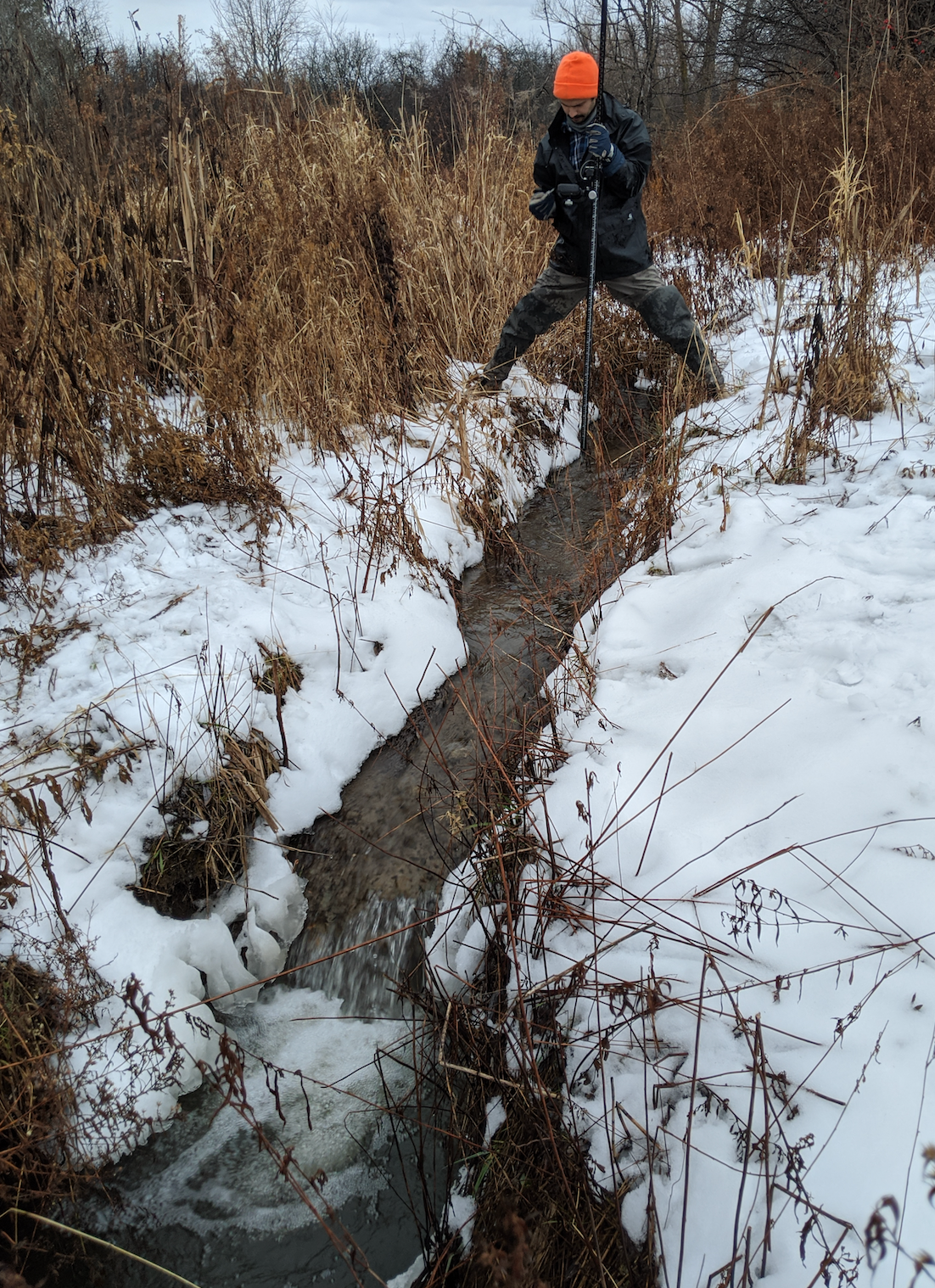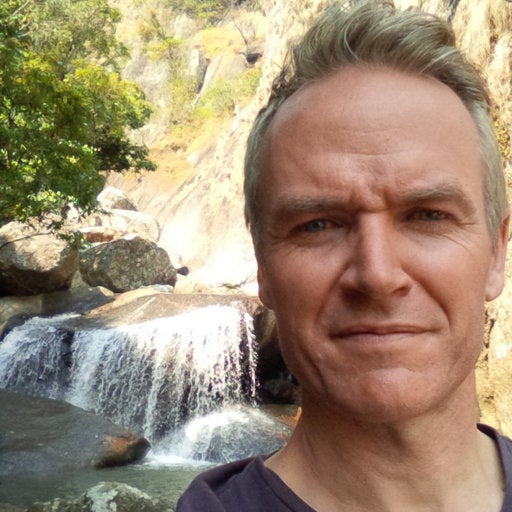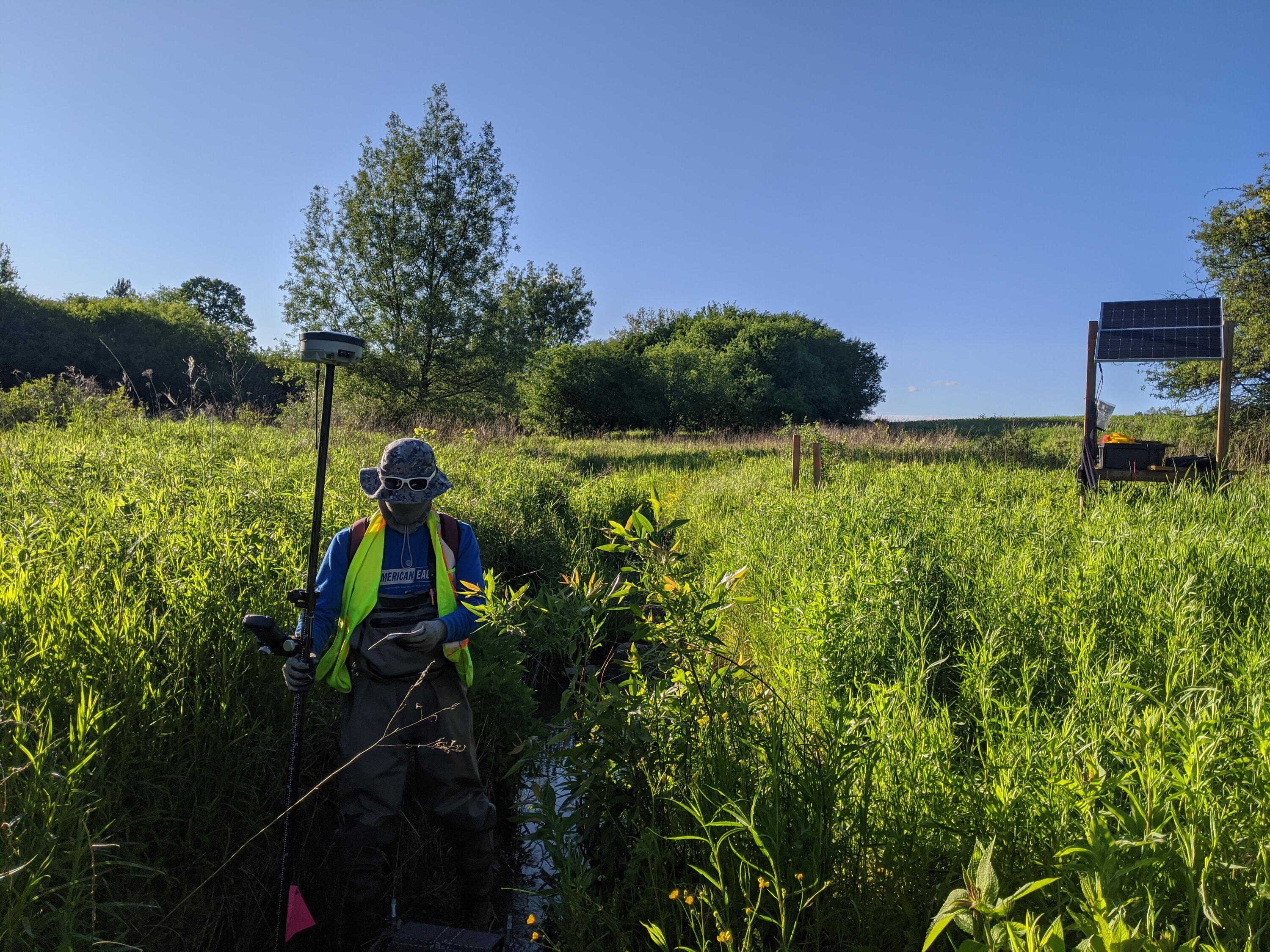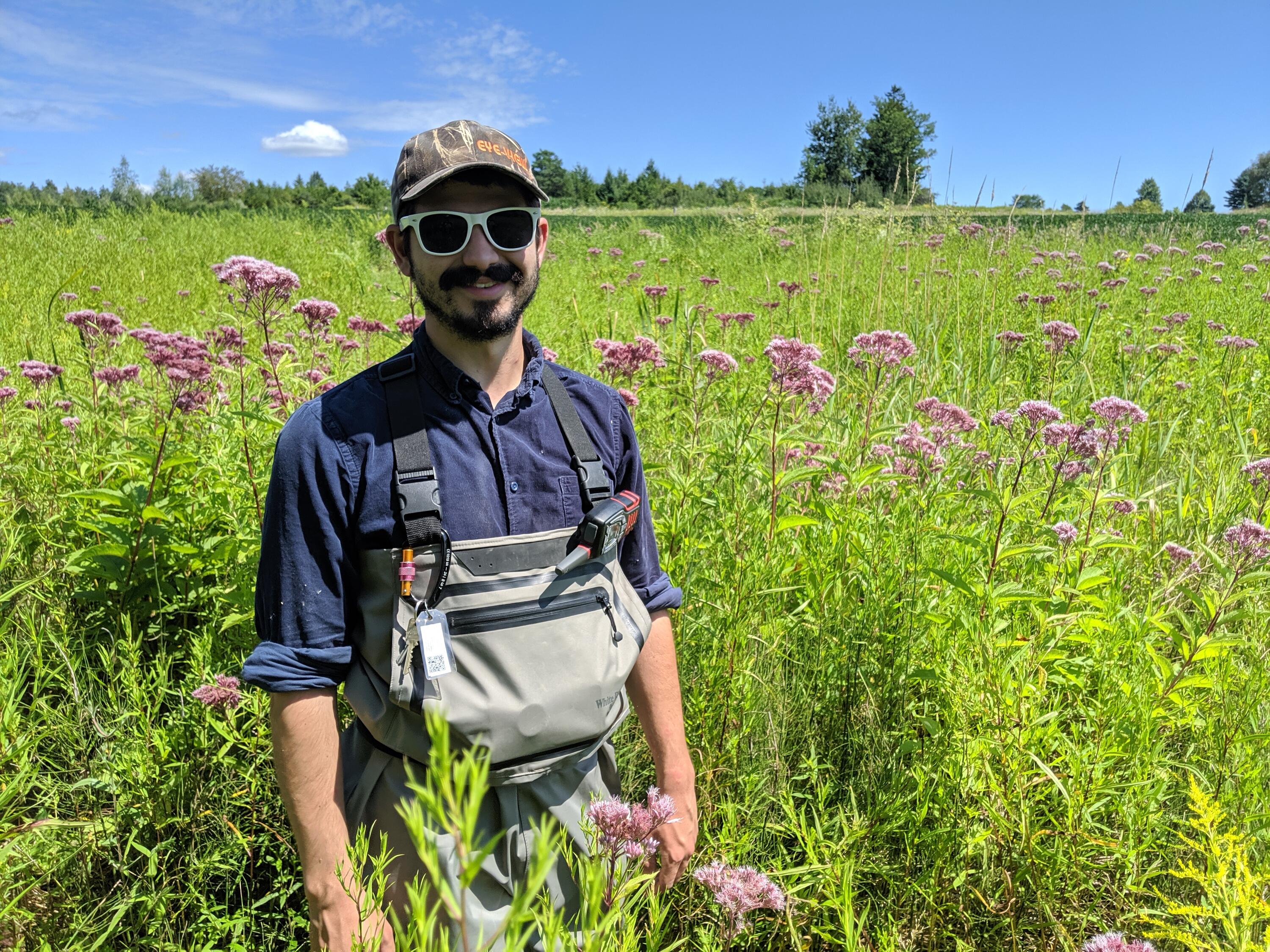If you have spent any time walking around (or in) rivers, you will see and feel little particles like gravel under your feet. What you might not realise is that larger phenomena, like climate change and urbanization, can significantly affect the balance of these particles in a river, causing environmental degradation that can lead to failures of infrastructure like bridges and pipelines.
A research group at the University of Waterloo, led by Water Institute member and Civil and Environmental Engineering professor Bruce MacVicar, is advancing new ways to measure river health by using a synthetic stone tracer they developed called a Wobblestone.

“To track sediment transport, we first seed the river with Wobblestones, wait for a flood, then come back to find where they moved,” said MacVicar. “This information is the most direct method we have for figuring out the impact of a flood on the channel morphology.”
Wobblestones use a radiofrequency identification (RFID) transponder which is widely used to track sediment in a variety of environments. However, the research group’s recent innovation placed the transponder inside of a rotating inner mechanism that is designed to ‘right’ itself (or have the RFID face upward) even if the outside stone turns as its transported in the river.

Bruce MacVicar
MacVicar’s research group has also set up river monitoring stations that combine a variety of measuring techniques and automate the data collection process.
“The monitoring station we set up has a SIM card, just like your phone, and can send text messages when something interesting is happening in the river,” said Matthew Iannetta, Collaborative Water Program Master’s student in Civil and Environmental Engineering.
Iannetta explains that sediment in the rivers, like gravel and cobbles, do not move very often.

“Wobblestones can directly impact stream restoration and infrastructure monitoring,” said MacVicar. “These stones could be seeded around bridge piers and a tracking station installed downstream. During a flood we could get real-time information about which tracers pass the antenna. Depending on how we seed the tracers, for example at different depths, the ID of the passing tracers could tell us how much scour was occurring around bridge piers and whether the structure was at risk of failing.”
MacVicar and his group are working extensively with collaborators outside of the University of Waterloo such as municipal governments, watershed authorities, and private partners to help define the problem and identify high-priority sites. MacVicar also collaborates with experts in geography and ecology, stressing how important interdisciplinary work is when it comes to water.
“Our work is engineering, but we are often working with natural systems or trying to restore heavily engineered systems back toward a more balanced condition,” said MacVicar. “It is challenging because people speak different technical languages and see different things when looking at the same river, but problems like climate change and loss of biodiversity are too big for any one discipline.”

Matt Iannetta
On January 11, 2020, the team celebrated when they received a text that Tracer ID8513 had passed one of their monitoring stations, confirming that the system they built works – including their new innovation which allows measurement of how deeply the tracers are buried after the flood.
“The depth of burial is important because it allows us to better predict its probability of movement in later floods,” said Iannetta. “This way we get a 3D picture about how the tracers are mixing with other stones in the river as they are moved downstream, which is new information that could lead to fundamental advances in the field.”
The collaborators involved in this work are members of the University of Waterloo River Hydraulics Research Group supervised by MacVicar. Elli Papangelakis, Postdoctoral Fellow and graduate of the Collaborative Water Program at Waterloo, and Christopher Muirhead, Collaborative Water Program graduate, developed and tested the Wobblestone design. Muirhead designed an earlier version of the monitoring station and tested it in Schneider Creek located in Kitchener, Ontario. Aryn Cain developed the method to obtain Wobblestone burial depth measurements without disturbing the riverbed and demonstrated this method in the field at Ganatsekiagon Creek located in Pickering, Ontario. Dirk Friesen significantly contributed to the final design of the station.